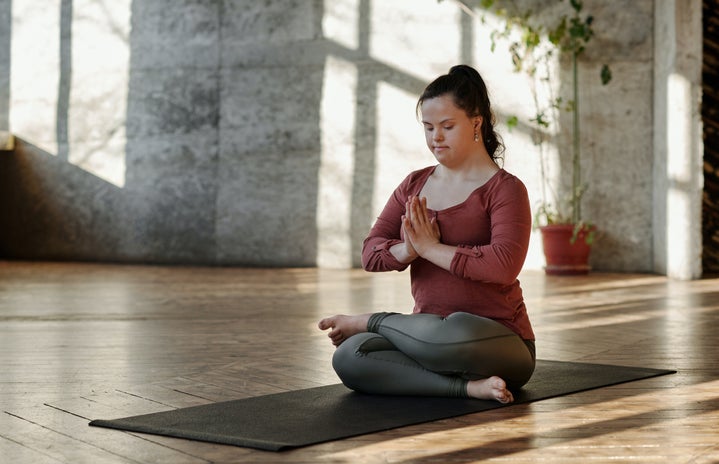Meditation has had many misconceptions along the years. As mediation has become more prominent in the wellness field, so has its skepticism. “It doesn’t actually work”, “It’s only for ‘woo-woo’ people”, “I can’t shut out my thoughts, I am bad at meditating.” However, meditation does not need to be this complicated. There are various forms of meditation, all of which serve different functions and can be adapted to fit what you can manage. The benefits of meditation are as significant as the misconceptions surrounding — it is known to be able to slow the aging process, reduce stress, heighten your quality of relationships, and can even fight against pain and chronic illnesses.
But how does it do this?
One way is through visualization. Visualization is a type of meditation that people use to visualize anything from healing your body, to imagining what your life will be like in ten years. And guess what: by visualizing, you are able to focus your thoughts onto an image, so you don’t need to worry about not knowing what to do when unwanted thoughts arise.
Let me first describe how visualization has gotten people to cure themselves from illnesses by changing their gene expression, and how others have been able to achieve their goals and gain control over their lives.
How does visualization work?
Well, as Dr. Joe Dispenza explains, your brain, as intricate and smart as it is, cannot differentiate between a lived experience and an imagined one. This means that if you imagine yourself sitting on a beach in Mexico, the chances are, your body thinks that you truly are sitting on a beach in Mexico. How is this possible? Well, let’s take you through a test. I want you to close your eyes and imagine a lemon. Think of a nice bright yellow lemon, with its zesty skin, and juicy yet sour inside. Now imagine yourself walking to the fridge, putting your hand on the fridge handle to open it. Imagine yourself grabbing onto the lemon, ready to eat it. Now imagine yourself grabbing a cutting board and cutting into the lemon, then taking a piece and putting it in your mouth. Now if you pay attention, you have started to salivate. Lemons are sour, and by salivating, your body is producing the digestive enzymes necessary to break down what you are about to eat (Heal, 2017). But are you actually eating the lemon? No. Do you believe me now? Your environment triggers your gene expression, but when it comes to your brain, it doesn’t know if your environment is made up in your head, or if you are actually living it.
How can you use visualization in your life?
Think of something you would like to change. Is it your health? Is it your relationship? Is it your stress level? Once you have figured it out, think of what your ideal situation would look like, and be specific. Take some time alone in a comfortable spot and sit in silence with your eyes closed. Imagine what it’s like to live the life you want. Imagine what it feels like, what it looks like, who is involved, and how you go about your day in this desired version of you. The key here is to be specific. By visualizing, in detail, about the desired response, it helps your brain and body think that you already have it. What does your body do when it believes it is in abundance? It can heal. It can move from fight or flight mode to rest and relaxation. It allows room for your body to change its physiology and upregulate certain genes, while downregulating others. If you imagine yourself healed from a chronic illness, your body naturally thinks it has already healed, and therefore allows your body to upregulate healing genes.
By engaging in this practice, you only need as little as one minute per day. By starting small, you are more likely to stick to it. However, you must be aware that when you are visualizing your ideal situation for 1 minute a day, for it to actually be beneficial, you can’t spend the next 23 hours and 59 minutes being sorry for yourself. You need to trick your body into thinking that you are where you want to be, by being conscious of the life you want. Visualization helps you be conscious of what you desire and allows you to be conscious during your day.
So, if you’re looking for change in your life, why not give it a shot?
Heal. Directed by Kelly Noonan, Elevative Entertainment, 2017.


